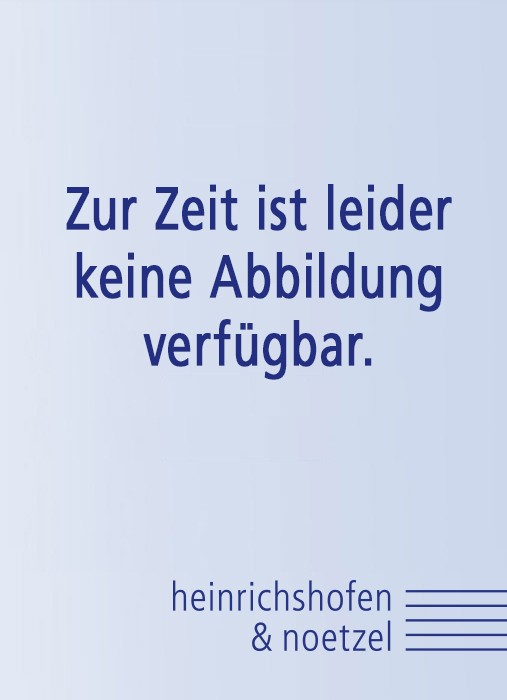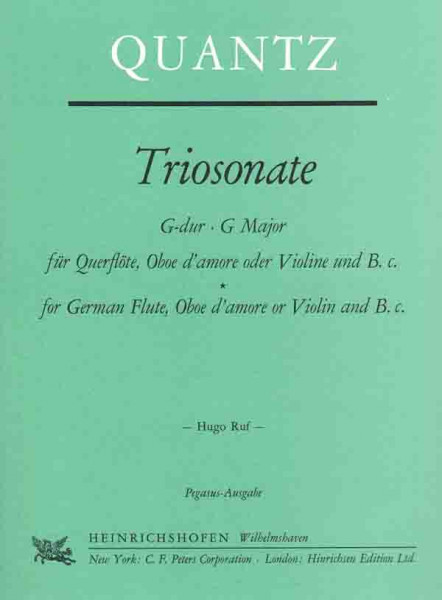No results were found for the filter!

Jean-Marie Leclair
Sonata Es-major opo.9 No 9 Violin and basso continuo
Jean Marie Leclair (1697-1764) was born in Lyon. He also performed here as a violinist and dancer after a temporary stay in Rouen. He then studied with G.B. Somis (a student of Corelli) in Turin. From 1728 he lived in Paris, where he worked for several years as a violinist in the royal chapel and later as a private teacher and composer. With him, violin playing reached its first peak in France. Leclair published four books of 12 sonatas each for violin and figured bass; our sonata is the ninth in the fourth book, opus 9, and in form and style represents the type of chamber sonata or suite. It begins with two dances, a French courante and an allemande. The usual order is reversed here. The Adagio has none of the solemn seriousness of the church sonata. Despite elaborate modulations and many double stops, it is dominated by gentle expression. The finale is a lightly moving and elegant piece in 3/4 time. The formal type of the fugal allegro is completely absent here. The source is a copy of the original edition of the 4th book in the New York Public Library, published in Paris in 1738 and engraved by Leclair's second wife Luise-Catherine. The dynamic indications and line markings added by the editor have usually been indicated. Content: - Courante à la Française - Allegro moderato (Allemande) - Adagio - Vivace (Non troppo Allegro)
Mehr €18.00 *
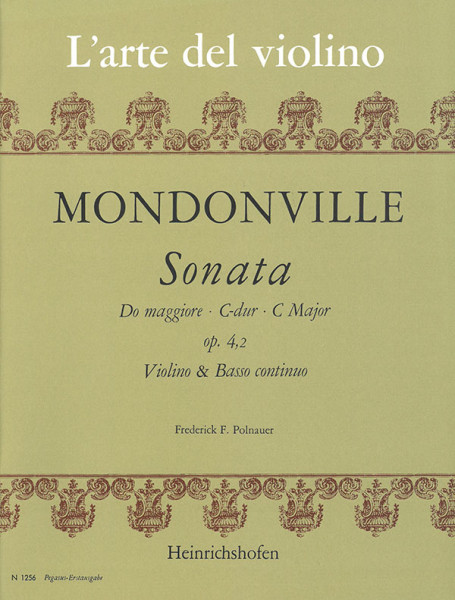
Jean-Joseph Mondonville
Sonata C-major op.4 Nr. 2 Violin and basso continuo
Jean-Joseph de Cassanéa de Mondonville (1711-1772) lived mainly in Paris. The fact that he was accepted into the Concert spirituel, where he acted as principal director and conductor, speaks for the high reputation he enjoyed as a violin virtuoso and as a composer of motets, operas and instrumental works. The present sonata is the second of a collection of six sonatas for violin and figured bass op. 4 ( about 1735). They represent an innovation in the history of violin playing in that the flageolet is used in them for the first time. This remains limited to the natural harmonics. Mondonville's notation of the harmonics is not yet the one in use today, as he marked them with small wavy lines, which have been replaced in our edition by the signs used today. In the last movement of the sonata (bar 11) there are even flageolet double stops. The bass part intended for the violoncello is also occasionally provided with harmonics. As these sonatas were written primarily for technical and pedagogical purposes, the omission of elaborate work is justified. A copy of the original edition, which is in the possession of the Library of Congress, Washington, and bears the following title ‘ Les Sons Harmoniques Sonates à Violon seul avec la Basse Continue.Œuvre 4e ’ The dynamic indications and bowings added by the editor have been marked in the usual way. Content: - Andantino - Allegro - Aria (Gratioso) - Giga (Allegro)
Mehr €18.00 *
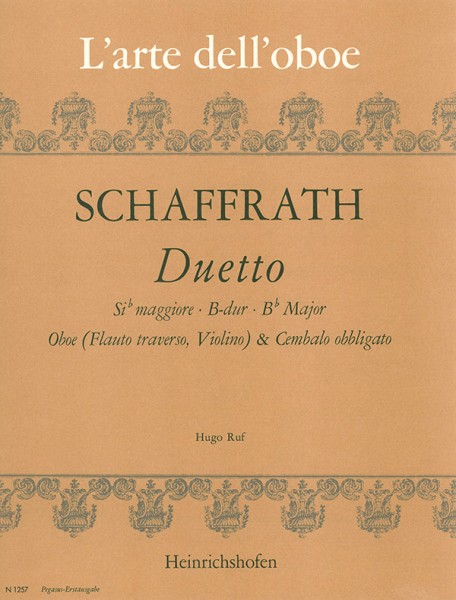
Christoph Schaffrath
Duetto in B flat major Oboe (flute, violin) and harpsichord obligato
Christoph Schaffrath (1709-1763) was one of the important musicians and composers that the music-loving Frederick II of Prussia gathered around him. He can be described as one of the most interesting and imaginative composers of the Berlin circle. In addition to overtures, symphonies and quartets, he mainly wrote harpsichord works and chamber music in which the keyboard instrument plays a leading role. The editor's work extends to compiling the score, correcting some errors and setting out the continuo parts. Additions to the score are indicated as such by small notes, brackets or dotted slurs. Content: - Largo - Allegretto - Vivace
Mehr €13.00 *
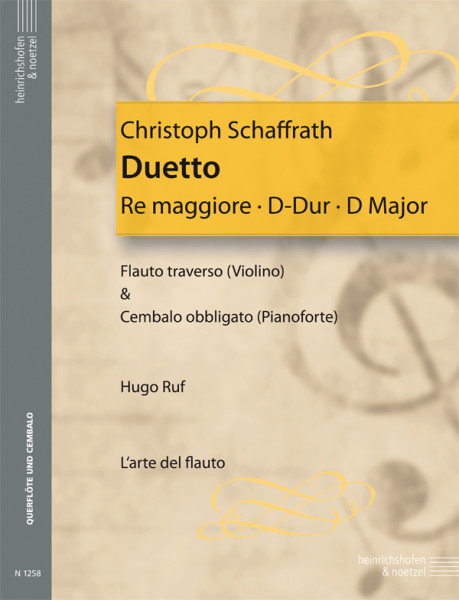
Christoph Schaffrath
Duetto D major | op. 1 Flute (violin) and hapsichord (piano)
Christoph Schaffrath (1709-1763) was one of the important musicians and composers that the music-loving Frederick II of Prussia gathered around him. He can be described as one of the most interesting and imaginative composers of the Berlin circle. In addition to overtures, symphonies and quartets, he mainly wrote harpsichord works and chamber music in which the keyboard instrument plays a leading role.Schaffrath's Duet in D major is published here for the first time in a new edition. Our edition is based on the copy of the first print of the ‘ Six Duets op. 1 ’ in the Saxon State Library in Dresden. Duets I, III and V are written for violin and harpsichord, the others for flute and harpsichord. The present composition is Duetto II. The editor's work extends to compiling the score, correcting some errors and setting out the continuo passages. Additions to the score are indicated as such by small lines, brackets or dashes. Content: -Allegro -Andante -Allegro
Mehr €14.00 *
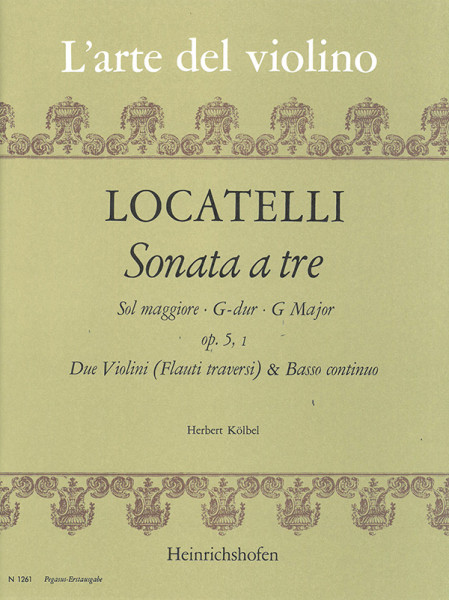
Pietro Locatelli
Sonata a tre | G major 2 violins (2 flutes) and basso continuo
Born in Bergamo on 3 September 1695, Pietro Antonio Locatelli studied with Corelli in Rome. In 1725 he was appointed chamber virtuoso at the court of Mantua. He also performed as a violinist in the entourage of the Elector of Saxony, for example in Kassel in 1728, Berlin in 1729 and Amsterdam, where he settled permanently in 1730. As a violin teacher, composer and music publisher, he was both respected and wealthy there. Locatelli died on 3 March 1764 and was buried in the Beguinage in Amsterdam. We know from his estate catalogue that he owned two transverse flutes and a ‘Flûte d'Amour’. His Opus II, 12 sonatas for ‘Flauto traversiere’ and basso continuo, also shows that he was very familiar with the transverse flute. The present work is taken from Opus V, published by the author himself in Amsterdam in 1746. The title of the opus, which contains six sonatas, explicitly states that they can be played with two violins as well as two flutes. There is also nothing to prevent it being scored for violin and flute. This original version remained unchanged when it was saved. Like many of Locatelli's compositions, this trio sonata also differs from the works of his Italian contemporaries in its unconventional originality. It is also particularly easy to play, as it is dedicated to a dilettante, the city secretary of Amsterdam, M. Lestevon, a pupil and patron of the composer. It will also delight music lovers of our time, not least because of the pastoral middle movement. Content: - Andante - Largo, Andante - Allegro - Vivace
Mehr €16.00 *
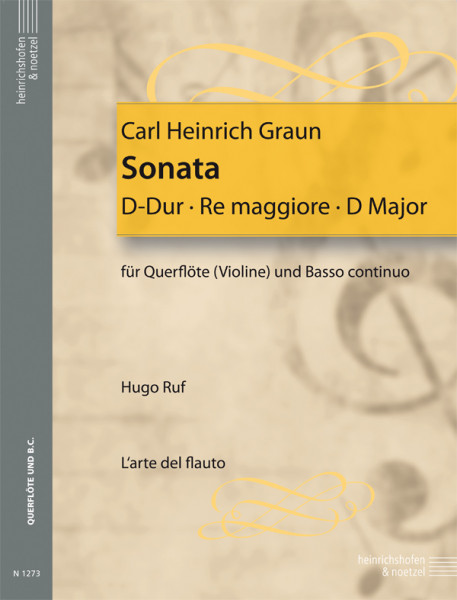
Carl Heinrich Graun
Sonata D Major Flute (violin) and basso continuo (violincello ad.lib.)
The publication of this sonata by the Potsdam court conductor Carl Heinrich Graun is based on a manuscript in the possession of the Saxon State Library in Dresden. Our edition is the first time the work has appeared in print. Editorial additions are marked as such in the score; added slurs are dotted, added ornaments and dynamic markings are bracketed. The harpsichord accompaniment, written after the figured bass, is printed in small print. Content: - Largo - Poco allegro - Vivace
Mehr €13.00 *
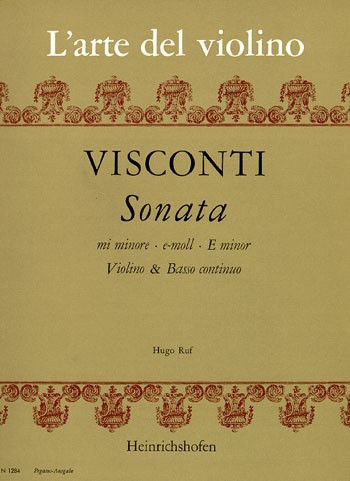
Gasparo Visconti
Sonata E - minor Violin and basso continuo
Content: - Grave - Allegro - Grave - Allegro
Mehr €13.00 *
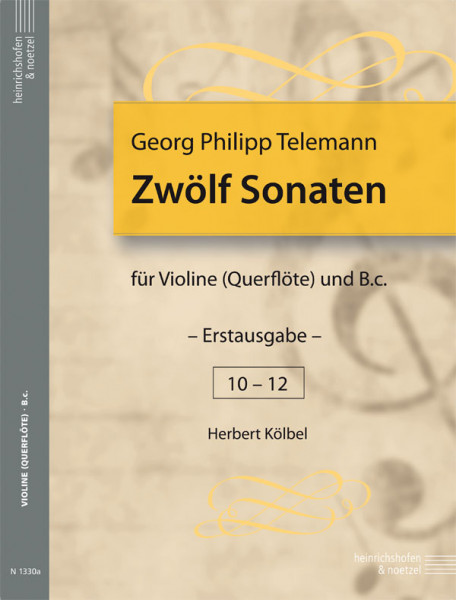
Georg Philipp Telemann
Twelve Sonatas | sonatas 10 - 12 | volume 4 Violin (flute) and Basso continuo
First edition This edition is based on a manuscript from the Staatsbibliothek Berlin, Preußischer Kulturbesitz, Musikabteilung. It comes from the estate of Telemann, who gave it to his grandson Georg Michael Telemann (1748-1831). G. Poelchau acquired the manuscript in 1834 with a pack of music stored in a church tower in Riga. From Poelchau's estate († 1836) the sonata work came to the Royal Library in Berlin. The sonatas are dedicated to the brothers Rudolf, Hieronymus and Johannes Wilhelm Burmester of a Hamburg patrician family dated 1 March 1734, with the note that they follow the ‘12 methodical sonatas’, which were also dedicated to the first two brothers. The close connection between the two large sonata works can be found in their valuable musical content, in the sequence of movements (slow, fast, slow, fast), and in the succession of keys (C-a-D-h-E-F-d-G-e-A-f sharp-g). The bass lines are often involved in the theme. Occasionally we are reminded of J.S. Bach's inventions. In the title, the violin is named as the solo instrument before the flute, as several sonatas are unmistakably written “violinistically” without this hindering their playability for flute. The present edition adheres strictly to the manuscript. Suggestions for dynamics are indicated as such by brackets, as are those for articulation (by dotted lines), which may differ for violinists from those intended for flute. Experienced players should use the original figured bass for their own interpretation. The 12 sonatas made available to the public here for the first time are among the best compositions of this kind by Telemann, who dedicated them to 'connoisseurs and lovers' with the wish '...faire une bonne partie de Vos amusements'. The sonatas will fulfill this purpose today just as they did at that time. Content: X. - Soave - Dolce - Spirituoso XI. - Dolente - Vivace - Piacevole XII. - Teneramente - Spirituoso - Gratioso
Mehr €27.50 *
Viewed

